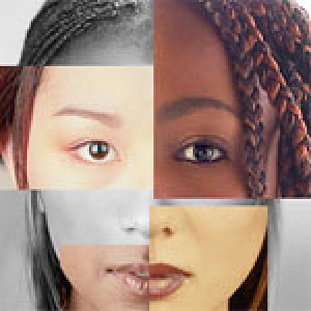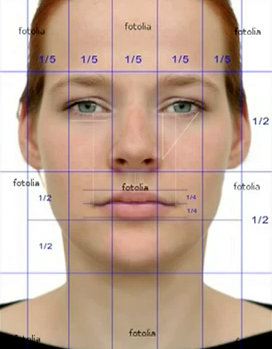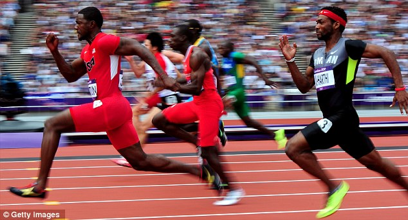Let’s Talk!
We live in a world that values physical beauty. Most of us are judged by how we present ourselves in various situations. Within seconds people attribute particular inner qualities to others based on their looks. But what exactly makes someone attractive?
According to Wikipedia, attractiveness is defined as “a quality that causes an interest or desire in something or someone.” In other words, when someone is considered beautiful, people tend to pay more attention to that person, want to be associated with them, or even want to be or possess them.
We may be hardwired to seek beauty. Studies have shown that babies spend more time looking at attractive people with big eyes, smooth skin, and full lips.
Dr. Nick Neave at Northumbria University observed that upon meeting someone, people tend to first notice how an individual moves. We often can deduce someone’s age, sex, social status, and health by the way they move. If a person is coordinated, graceful, and athletic, they are perceived as having healthy genes. Interestingly, throughout the animal kingdom, animals are also attracted to good movers.
Beauty standards are usually set by the dominant class of a given society. These standards can vary historically iiiiiiiiiiiiiiiiiiiiiiiiand Beauty standards are usually set by the dominant class of a given society and can vary historically as well as geographically. For example, a few centuries ago, having pale skin indicated that a person was part of the upper class because they did not work all day in the sun. By contrast in today’s world, is it the affluent that can afford vacations and maintain a dark complexion during the winter months.
Beauty is therefore linked to power and a person’s socioeconomic status. In the Western world, the dominant beauty standard for women is a tall, thin, young Caucasian female with a full head of long hair. The modeling industry reflects this ideal, although a select few models of other ethnic backgrounds are represented.
The media uses this Western world beauty ideal to sell a variety of products. Being constantly exposed to unattainable beauty standards has made many women (and some men) feel inadequate. People’s self-esteem may be negatively affected by their inability to “measure up”.
Ironically, the skinny model ideal does not reflect what the rest of the world considers beautiful. According to Professor of Anthropology Jessica Bodoh-Creed, in about 44% of cultures, men select mates that are bigger whereas only 19% of cultures consider the Western world’s thinnest ideal as attractive.
However, there are cross-cultural similarities regarding what is considered beautiful. Bodoh-Creed points out that based on evolution, beauty is based on average/balanced features. For instance, having a protruding chin creates an imbalance in the face and usually makes someone less attractive.
 Dr. Stephen R. Marquardt, an Oral and Maxillofacial Surgeon at the U.C.L.A. Medical Center, has identified an archetypical attractive face for babies and another one for adults. Attractive babies have plump cheeks, rose button lips, enormous eyes, and the features are scrunched up together in the middle of the face.
Dr. Stephen R. Marquardt, an Oral and Maxillofacial Surgeon at the U.C.L.A. Medical Center, has identified an archetypical attractive face for babies and another one for adults. Attractive babies have plump cheeks, rose button lips, enormous eyes, and the features are scrunched up together in the middle of the face.
Can we measure physical beauty?
The most attractive body shape for a woman tends to be the hourglass one with a hip to waist ratio of 0.70, which is a narrower waist 70 percent of the hip circumference. This ratio often means that she is healthy, not pregnant, and able to bear children. This body shape may also reflect her lifestyle (i.e., good nutrition and exercise regimen).
For men, the ideal body shape is usually the tall “V” shape with broad shoulders, average weight, flat stomach, and moderately muscular body. Also, women tend to be attracted to masculine faces that have some feminine features such as full lips, as this suggests a warmer, caring person.
In both sexes, we look for symmetry throughout the body based on the golden ratio of 1:1.618. Furthermore, bilateral symmetry (left versus right side of the face); and tri-symmetry (3 vertical sections of the face) can be measured on a scale from 1 to 10. To date, the highest-rated person is 7, while most people are about 4. When someone is very symmetrical, they are usually universally considered attractive. For example, one of the most symmetrical celebrity faces is Brad Pitt.
Top athletes tend to be good-looking. Professor John Manning at the School of Biological Sciences of the University of Liverpool observed that more symmetrical runners tend to perform better in races than less symmetrical athletes. What is surprising is that the differences in symmetry are in the order of 1 mm.
Interestingly, resear ch
ch at Newcastle University in England demonstrated that women’s faces are more symmetrical during the fertile phase of their menstrual cycle. The soft tissue on their faces becomes engorges with fluid, lessening facial asymmetry. Also, their lips become fuller, their cheeks rosier and their pupils more dilated.
at Newcastle University in England demonstrated that women’s faces are more symmetrical during the fertile phase of their menstrual cycle. The soft tissue on their faces becomes engorges with fluid, lessening facial asymmetry. Also, their lips become fuller, their cheeks rosier and their pupils more dilated.
Throughout history, women have tried to enhance their facial attractiveness. In fact, human beings have been using make-up for 4 thousand years. Dr. Vail Reese, a Dermatologist, argues that make-up’s function is to minimize any discoloration of the skin or irregular contour that may signal disease or aging. Eye make-up makes the eye look bigger, and therefore younger. Lipstick makes lips look fuller and therefore advertise youth and health.
As we all know, physical beauty is fleeting as both men and women tend to be most beautiful between the ages of 18 to 24. Furthermore, although attractiveness can open many doors both professionally and personally, in the long run, other prized personality traits have to be cultivated. In other words, true beauty has to be more than skin deep.
Case in point, across many cultures, when it comes to marriage or long-term relationships, looks are less important. Other characteristics such as intelligence, kindness, dependability, and emotional stability take precedence over an appealing physique.
The concept of beauty can be difficult to define. A person can be considered beautiful by one person and plain by another.
However, there are some guidelines that we can use to measure what universally people perceive as beautiful. A coordinated, symmetrical, young, average weight and tall person is often viewed as attractive.
Ultimately, a mixture of outer and inner beauty may be necessary to be truly beautiful. Therefore, it is important to cultivate qualities such as intelligence and kindness that are indeed timeless.
Literary Truths
Here are some interesting facts about attractiveness and mate selection:
- Women’s increased socio-economic status: women who have attained a high socio-economic status have fewer available partners as they themselves seek higher status men.
- Attractive people’s preference: attractive men and women tend to select mates who match their level of physical beauty.
- Ovulation and make-up: women unconsciously tend to put on more make-up during the fertile phase of their menstrual cycle. This strategy can increase their chances of attracting a mate.
- Make-up and status: women who wear make-up are generally perceived as earning more money and having more prestigious jobs.
- Clothing colour and attractiveness: women wearing the colour red tend to be perceived as more attractive by men.
- Relationship between height and income: taller men usually have higher income throughout their careers than short men.
Truth in Motion
References
“Beautiful?” The Documentary
Furnham, Adrian, and Teresa Tsoi. “Personality, gender, and background predictors of partner preferences.” North American Journal of Psychology 14.3 (2012): 435.
Gueguen, Nicolas. “Makeup and menstrual cycle: near ovulation, women use more cosmetics.” The Psychological Record 62.3 (2012): 541.
Jaeger, Mads Meier. “‘A thing of beauty is a joy forever’? Returns to physical attractiveness over the life course.” Social Forces 89.3 (2011): 983.
The Miracle of Face – Searching for Beauty – Part 1 to 6
Picture 2: https://www.youtube.com/watch?v=1JSqpCjbdcM
Ricciardelli, Rosemary. “Masculinity, consumerism, and appearance: a look at men’s hair.” Canadian Review of Sociology 48.2 (2011): 181.
What Makes You Sexy – BBC Explorations – Storyteller Media Part 1 to 6: https://www.youtube.com/watch?v=1JSqpCjbdcM
Wikipedia – Attractiveness: https://en.wikipedia.org/wiki/Attractiveness


As usual, an informative well written important piece. Thank you for sharing your expertise, time and passion.
Thanks a lot for the post. Really looking forward to reading more.
Very nice colors on your blog. The design here makes it stand out a lot compared to some of the other not as good blogs stuffed with a bunch of stolen work. Thank you for the help on this topic, as well!
I’m new to your blog, nice article. Thanks for posting this.
Continue the good work and people will continue to come to your blog! I have been updating my blogs as well.
Great writers aren’t everywhere – I think you have done a great job here. Nice job.
Hello, I enjoy reading through your post. I wanted to write a short comment to support you.